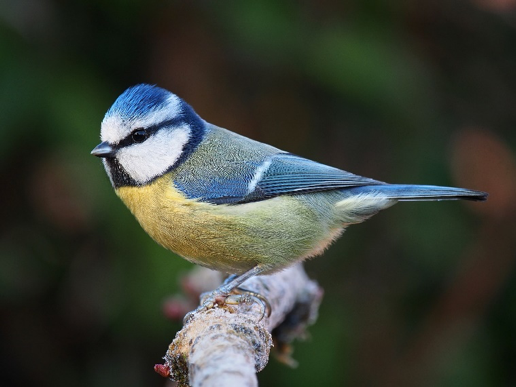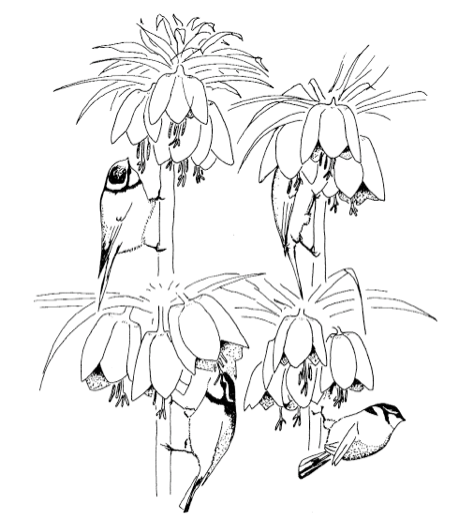Scotland’s Community Groups do so much for our pollinators. In mid-June we will host a conference to celebrate their many pollinator-friendly actions, but for now let’s take a closer look at two fantastic community actions. Whether you visit Starbank Park in the capital city, or chat with Broughty Ferry’s Margaret Alston your appreciation of all things pollinator is bound to grow.
You probably think Jam, Jute and Journalism when it comes to considering the great successes of Dundee. But three ladies in Broughty Ferry have been working hard to add a new category to celebrate – bumblebees! A few weekends ago Mag and Lil, whom many of you will know if you follow their twitter feed, and seek out Dundee-based bumble bee news, were pushing their pollinator friendly advice at Dundee University Botanic Gardens.

Mag (better known to some as Margaret Alston) is an energetic retired Primary School teacher, and teaching is the chosen profession of her daughter Holly too. Mag’s grand-daughter Lil is the youngest member of the dynamic trio. However, regardless of which generation you speak to, the love of pollinators, and especially bumblebees, shines through.
In what their first face-to-face event since lockdown, the emphasis at Dundee’s Botanic Gardens was on bumblebee fun and garden activities for all the family. Their Children’s Activity Stall was ‘buzzing’ with energy and we were delighted to provide them with our range of Children’s Activity sheets for the day – featuring bumblebees, solitary bees and honey bees.

Mag and Lil welcome children and their adults of all ages to their activity sessions, and promote a simple message … bumblebees (and other bees) need our help!
The focus their events is on the basic needs of all living creatures, explains Margaret “We focus on flowers as they are the bumblebee’s source of food, water and shelter. It’s so important to emphasise the need of safe places to make nests and hibernate. There is also an acknowledgement that we in turn benefit when bumblebees pollinate our food crops and other flowers….they make our world a better place to be(e).”
Their fun filled activities reflect this message, and their hope is that children and adults leave the stall having learnt something about bees and with a renewed determination to help them. Those activities are many and varied and include making miniature gardens where bumblebees might like to live, a quiz (everyone loves a quiz!), a game called hook a bumble. And there are prizes.
Don’t worry if you didn’t make it along in May, come June 11th you have another chance to be enthused by this marvellous trio as they will be bringing their brand of bumblebee magic to an event in Broughty Ferry. Watch their twitter feed for further information.
Margaret’s philosophy is grounded in solid common sense and years of experience as a teacher. “When dealing with very small children,” she explains, “a story or a bit of drama compounds learning in a very effective and unforgettable way. At our event in the Broughty Ferry library I shall be doing a little bit of play acting encouraging children to join in, with a giant flower and a little bumblebee! Holly or Lily will be reading ‘I Saw a Bee’ by Rob Ramsden (it gives a brilliant message about bees to tiny children) and there are some lovely worksheets and teachers pack to go with the book.”
Head south across the Firths of Tay and Forth and you might, if you are lucky, find yourself at Starbank Park. Here Janet McArthur, Chair of the Friends of Starbank Park, inspires a willing army of volunteers to do their bit for pollinators.
In a well thought through pollinator-friendly approach everything from diverse floral planting schemes, to the inclusion of flowering trees and bee hotels is catered for.

The enthusiastic Friends of Starbank Park has this year focusing on native plants and – given the circumstances in Ukraine since February – sunflowers. Indeed the group has been packaging up hundreds of sunflower seeds as part of a local fund-raising effort which have been sold in shops and cafes in their local community raising to date just under £500. There is an affinity for sunflowers at Starbank, last year saw volunteers, including local nursery schools, plant hundreds of sunflower seeds.
A visit from the Duke and Duchess of Cambridge coincided with an event to scatter pollinator friendly seeds in the park last year. That royal connection helped the Starbank Group’s pollinator planting area enjoy being published in the media throughout the UK, highlighting the need for more pollinator friendly patches.
Serious thought is given to what is planted. The group leaves plants such as loosestrife in the hedge to help orange tip caterpillars feed, and packs their flower beds with cosmos, nasturtiums, foxgloves, scabious, oxeye daisy, and lupins giving an aesthetically beautiful garden centrepiece that is a feast for pollinators.
Forward thinking is often the key to success, and the group ably demonstrated this in collecting the seeds of their many pollinator friendly flowers in order to plan sowing the following season’s flowers.
Add to the mix the fact that Starbank Park run workshops to promote bees and butterflies in their local community and planted hundreds of crocus bulbs last autumn to feed the bumblebees early spring it is clear that planning is a key strength of Janet and her team’s outlook.

So be it Broughty Ferry or Starbank Park you can be sure to that pollinators are being considered, and then some.
Join the NatureScot Community Groups conference:
Last year NatureScot hosted an online conference looking at the relationship between pollinators’ needs and Local Authorities greenspace actions. This year the conference — on the morning of June 21 — will focus on Community Groups. The aim is to celebrate pollinator-friendly approaches, share good practice and offer advice on how to get your community involved. Speakers will include Athayde Tonhasca, Scott Shanks, Paul Castle, Catherine Lawson, Leigh Biagi and Francesca Martelli. To attend please contact jim.jeffrey@nature.scot


































